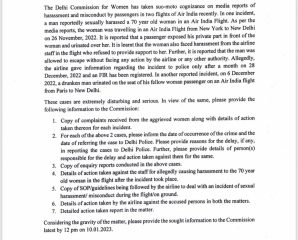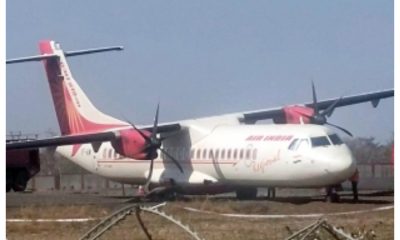Business
Air India moves forward on five-year transformation roadmap
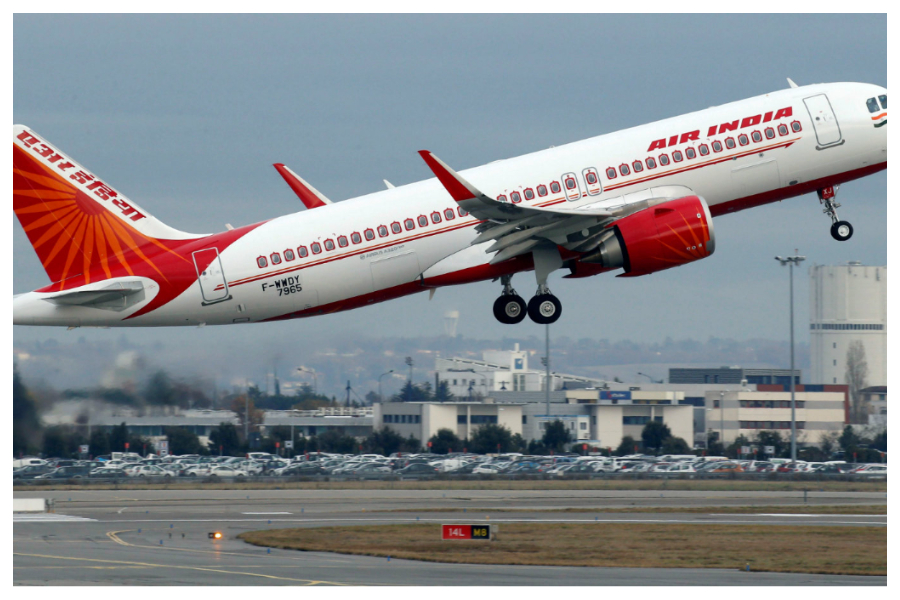
Moving forward on its five-year transformation roadmap, Air India, which had not recruited in the non-operations areas for more than 15 years, has started adding talent in all spheres of its business.
The airline’s aggressive expansion plan, which has already seen 17 long-grounded aircraft return to the skies with 12 more to follow, and the lease-in of 30 narrow- and wide-body aircraft over the next 12 months, also necessitates a significant expansion in flying crew.
The first phase of this initiative to augment talent has received an overwhelming response. Over 1,752 applications for pilots and 72,000 applications for cabin crew have been received in the last two months, which are in the process of assessment.
Interest from management post-graduates with three years’ experience to fill ground based-business roles has been similarly strong, with over 25,000 applications received in little more than one week. On appointment, those selected will be placed in various functions in Air India, including airport operations, commercial, engineering and human resources among others, and will form an important part of Air India’s internal talent and future leadership pipeline.
Whether it is commercial functions like revenue management, sales, distribution, network planning and marketing or Business Support Services, including HR, finance, IT and analytics; as well as Operations, spanning inflight product design, ground, engineering and airport services, rostering and operations control, talent will be added to all the sections.
Placing high priority on becoming a world leader in information technology, Air India has received more than 2,000 applications for a New Tech centre at Kochi, Kerala, including developers, architects, cyber security professionals, programme managers and UX/ visual designers among others.
Commenting on the focus on next-gen talent acquisition, Suresh Dutt Tripathi, Chief Human Resources Officer, Air India, said, “An entire generation of workforce has missed the opportunity to work for Air India due to limited recruitment over the years. We are seeking to make up for this organisational gap as we work to make Air India the world’s leading airline with customer focus at the heart of its operations.
“Our talent acquisition initiative is focused on identifying and recruiting the right talent in order to ensure that our human resource capabilities keep pace with the growth momentum and evolving needs of the organisation.”
National
Ravindra Chavan, Trusted Lieutenant Of Maharashtra CM Devendra Fadnavis, Appointed BJP State Unit President

Mumbai: Ravindra Chavan, known as a trusted lieutenant of Maharashtra Chief Minister Devendra Fadnavis, will take over as BJP’s state unit president on Tuesday.
The incumbent, Revenue Minister Chandrashekhar Bawankule, will hand over charge at a party conclave in Mumbai. The mantle is being handed to Chavan, whose grassroots planning ensured BJP’s impressive electoral performance in Thane and the Konkan belt, with an eye on the coming elections to the local bodies, according to party sources.
Chavan was the only candidate who filed his nomination papers on Monday at BJP state headquarters in the presence of Fadnavis, Bawankule and the party’s Maharashtra in-charge Arun Singh. Union minister Kiren Rijiju was present as the central observer.
Chavan represents Dombivali for the fourth term in the Assembly. He was a member of the Fadnavis cabinet between 2014 and 2019 and the Eknath Shinde-led government from 2022 to 2024. There was speculation of his elevation to the key party post started when he was denied a Cabinet berth after last year’s Assembly elections. He has been officiating as the working president of the state unit for the last few months.
The BJP is eyeing maximum number of municipal bodies in the Mumbai Metropolitan Region (MMR) comprising 8 municipal corporations. With the elevation of Chavan, known for his aggressive politics, BJP seems to be sending out a message to deputy CM Eknath Shinde-led Shiv Sena, which is likely to ask for lion’s share of seats for the civic polls. As an experienced leader, Chavan will shoulder his responsibilities with vigour and strength, Fadnavis asserted.
National
Hyderabad Chemical Factory Blast: Death Toll Rises To 32 After 15 Succumb Overnight

Hyderabad: The death toll in the explosion in a pharmaceutical unit at Pashamylaram near Hyderabad rose sharply to 32 on Tuesday, with about 15 injured succumbing at hospitals overnight.
The death toll in the worst industrial disaster in Telangana may go up further as the rescue workers continued searching for the bodies in the debris of a three-storey building, which collapsed under the impact of the blast.
A massive explosion had rocked Sigachi Industries Limited’s pharmaceutical factory at Pashamylaram industrial area in Sangareddy district, about 50 km from Hyderabad, on Monday morning.
The explosion in the Microcrystalline Cellulose (MCC) drying unit also left 35 workers injured. The condition of 11 of them is stated to be critical.
According to officials, 27 workers were still missing. They were feared trapped under the debris.
Personnel of the State Disaster Response Force (SDRF), Hyderabad Disaster Response and Asset Protection Agency (HYDRAA), Revenue and police continued clearing debris.
The majority of the victims were migrant workers from states like Bihar, Uttar Pradesh and Odisha.
As many as 108 workers were at the factory at the time of the blast, which could be heard about five km away. The explosion triggered a huge fire, and 15 fire engines were used to douse the flames.
According to eye-witnesses, such was the impact of the explosion that workers were tossed in the air and fell several meters away.
As the bodies of some victims were blown to pieces or charred beyond recognition, the authorities were conducting DNA tests to establish their identity.
Chief Minister A. Revanth Reddy will be visiting the accident site on Tuesday. He will also call on the injured at a government hospital.
Health Minister Damodar Raja Narasimha told media persons at the spot on Monday that the cause of the explosion was not yet known. The company, which is 40-45 years old, manufactures Microcrystalline Cellulose, he said.
Labour Minister G. Vivek said prima facie it was not a reactor blast. Some problem in the air dryer system is believed to have resulted in the explosion and fire.
The state government appointed a high-powered committee to probe the disaster and its underlying causes.
The committer comprises the Chief Secretary, Special Chief Secretary (Disaster Management), Principal Secretary (Labour), Principal Secretary (Health) and Additional DGP (Fire Services).
According to the Chief Minister’s Office, the panel would also make recommendations to prevent the recurrence of such accidents.
National
Maha govt tables bill to set up Gadchiroli district mining authority

Mumbai, June 30: The Maharashtra government on Monday tabled the bill for the establishment of the 16-member Gadchiroli District Mining Authority for the coordination and supervision of orderly and rapid development of the mineral-bearing area and execution of plans and projects.
The authority will be headed by Chief Minister Devendra Fadnavis, who is also the Gadchiroli district guardian minister. The government’s move is important as it hopes to finish the Left Wing Extremism (LWE) and develop Gadchiroli as the next steel city of India.
The district is endowed with abundant minerals such as iron ore, hematite, magnetite, BHQ, limestone, Dolomites and coal, which are used as raw materials for various manufacturing industries.
Further, Gadchiroli district, which is rich in iron ore, has the potential to be developed as a hub for mineral-based industries, especially the steel industry, said the bill.
“Currently, the absence of an integrated administrative mechanism hampers the swift execution of the mining project. Hence a need was felt for the establishment of a unified authority comprising of certain ministers and secretaries of the relevant departments under the chairmanship of the Chief Minister to expedite mining approvals and foster the growth of mineral based industries such as steel and cement, thereby accelerating the holistic development of the Gadchiroli district and consequently of the state,” said the bill.
It pointed out that the authority will act as a catalyst in speeding up the process of operationalisation of approved mining leases, and will also generate employment in the district and boost the revenue of the state.
According to the bill, the Mines and Minerals (Development and Regulation) Act, 1957, and rules framed thereunder govern the development and regulation of mines and minerals. The major mineral blocks are auctioned following the Mineral (Auction) Rules, 2015. The mining concession holder is required to obtain various clearances and no-objection certificates from various departments and district officers of the government and local authorities within the timelines prescribed in the rules.
If the bidder fails to meet the prescribed timeline, the alloyed major mineral blocks will have to be auctioned again.
The Chief Minister last week at the industry conference said, “Gadchiroli 10 years ago was zero industrial area, nobody thought that it would become an Industrial magnet. Due to a slew of policies, Gadchiroli is becoming a new steel city of India to produce one-third of India’s steel that will change the entire outlook of the district.”
-

 Crime3 years ago
Crime3 years agoClass 10 student jumps to death in Jaipur
-

 Maharashtra9 months ago
Maharashtra9 months agoMumbai Local Train Update: Central Railway’s New Timetable Comes Into Effect; Check Full List Of Revised Timings & Stations
-
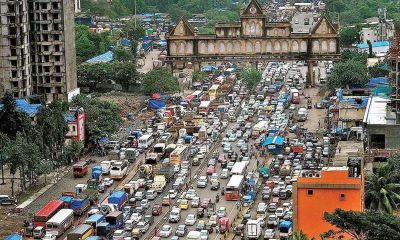
 Maharashtra9 months ago
Maharashtra9 months agoMumbai To Go Toll-Free Tonight! Maharashtra Govt Announces Complete Toll Waiver For Light Motor Vehicles At All 5 Entry Points Of City
-

 Maharashtra9 months ago
Maharashtra9 months agoFalse photo of Imtiaz Jaleel’s rally, exposing the fooling conspiracy
-

 Crime9 months ago
Crime9 months agoBaba Siddique Murder: Mumbai Police Unable To Get Lawrence Bishnoi Custody Due To Home Ministry Order, Says Report
-
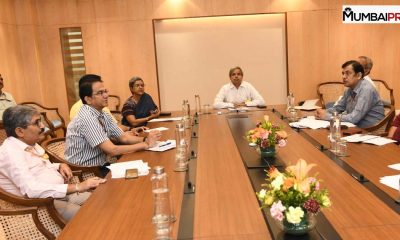
 National News9 months ago
National News9 months agoMinistry of Railways rolls out Special Drive 4.0 with focus on digitisation, cleanliness, inclusiveness and grievance redressal
-

 Maharashtra8 months ago
Maharashtra8 months agoMaharashtra Elections 2024: Mumbai Metro & BEST Services Extended Till Midnight On Voting Day
-

 National News9 months ago
National News9 months agoJ&K: 4 Jawans Killed, 28 Injured After Bus Carrying BSF Personnel For Poll Duty Falls Into Gorge In Budgam; Terrifying Visuals Surface





